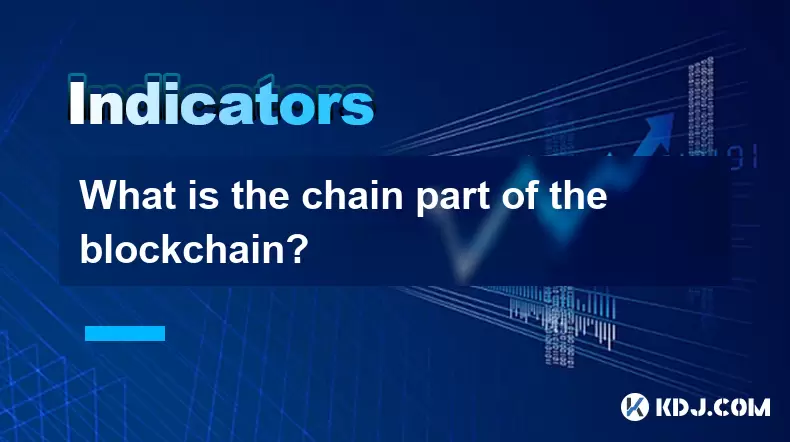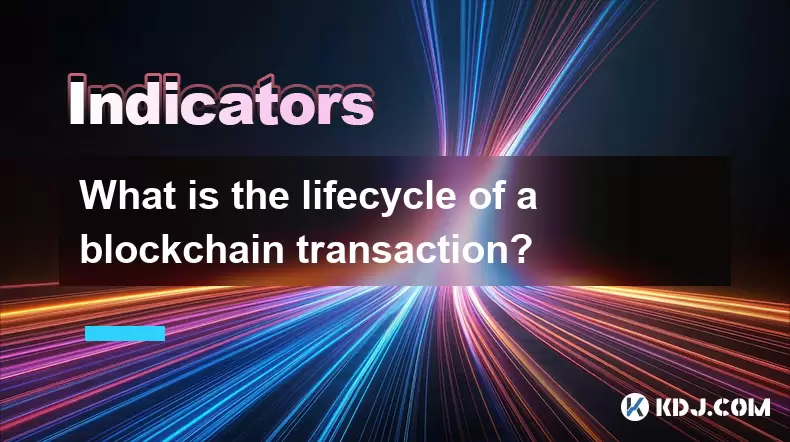-
 Bitcoin
Bitcoin $112400
-1.07% -
 Ethereum
Ethereum $3409
-3.27% -
 XRP
XRP $2.784
-6.60% -
 Tether USDt
Tether USDt $0.9997
-0.03% -
 BNB
BNB $739.3
-2.09% -
 Solana
Solana $158.0
-2.90% -
 USDC
USDC $0.9998
-0.02% -
 TRON
TRON $0.3213
-0.94% -
 Dogecoin
Dogecoin $0.1929
-5.01% -
 Cardano
Cardano $0.6974
-2.82% -
 Hyperliquid
Hyperliquid $36.69
-2.31% -
 Sui
Sui $3.327
-4.80% -
 Stellar
Stellar $0.3672
-5.18% -
 Chainlink
Chainlink $15.65
-3.07% -
 Bitcoin Cash
Bitcoin Cash $525.0
-1.68% -
 Hedera
Hedera $0.2291
-6.00% -
 Avalanche
Avalanche $20.91
-2.96% -
 Ethena USDe
Ethena USDe $1.000
0.00% -
 Toncoin
Toncoin $3.520
-1.12% -
 UNUS SED LEO
UNUS SED LEO $8.968
0.14% -
 Litecoin
Litecoin $105.7
0.26% -
 Shiba Inu
Shiba Inu $0.00001181
-1.79% -
 Polkadot
Polkadot $3.492
-2.08% -
 Uniswap
Uniswap $8.800
-3.10% -
 Dai
Dai $0.9999
-0.01% -
 Monero
Monero $289.9
-3.17% -
 Bitget Token
Bitget Token $4.243
-1.27% -
 Pepe
Pepe $0.00001006
-3.67% -
 Cronos
Cronos $0.1248
-5.68% -
 Aave
Aave $249.7
-2.50%
EMA multi-time frame analysis: What to do if the hourly chart and the daily chart conflict?
When hourly and daily charts conflict in EMA analysis, prioritize the daily chart, wait for hourly confirmation, and use additional indicators to make informed trading decisions.
May 28, 2025 at 10:42 am

EMA Multi-Time Frame Analysis: What to Do if the Hourly Chart and the Daily Chart Conflict?
In the world of cryptocurrency trading, utilizing different time frames for analysis is a common practice among traders. One popular tool used in this analysis is the Exponential Moving Average (EMA). When traders use EMAs across multiple time frames, such as the hourly and daily charts, they may encounter situations where the signals from these charts conflict. This article delves into how to handle such conflicts and make informed trading decisions.
Understanding EMA and Multi-Time Frame Analysis
Exponential Moving Average (EMA) is a type of moving average that places a greater weight and significance on the most recent data points. Traders often use EMAs to identify trends and potential reversals in the market. By analyzing EMAs on different time frames, traders can gain a more comprehensive view of market conditions.
Multi-time frame analysis involves looking at the same asset across different time frames to gather more insights. For instance, a trader might use a hourly chart for short-term trading signals and a daily chart for understanding longer-term trends. When these charts provide conflicting signals, it can create confusion and uncertainty about the best course of action.
Identifying Conflicts Between Hourly and Daily Charts
When using EMAs, a conflict arises when the signals from the hourly chart do not align with those from the daily chart. For example, the hourly chart might show the price above the 50 EMA, indicating a bullish trend, while the daily chart shows the price below the 50 EMA, suggesting a bearish trend.
To identify such conflicts, traders should:
- Monitor the position of the price relative to the EMA on both charts.
- Compare the slope of the EMAs on both time frames to see if they are moving in the same direction or diverging.
- Look for crossovers or divergences that might indicate a shift in market sentiment.
Strategies for Resolving Conflicts
When faced with conflicting signals from the hourly and daily charts, traders can employ several strategies to make more informed decisions.
Prioritizing the Higher Time Frame
One common approach is to give more weight to the higher time frame, in this case, the daily chart. The rationale is that longer-term trends tend to be more reliable and have a greater impact on the market's overall direction. If the daily chart indicates a bearish trend, a trader might choose to wait for the hourly chart to align with this trend before entering a trade.
Waiting for Confirmation
Another strategy is to wait for the hourly chart to confirm the signal from the daily chart. This means that a trader would wait until the price on the hourly chart moves in the direction indicated by the daily chart. For instance, if the daily chart is bearish, the trader would wait for the hourly chart to show a bearish crossover or a break below a key support level before acting.
Using Additional Indicators
Traders can also use additional technical indicators to help resolve conflicts. For example, combining EMAs with other tools like the Relative Strength Index (RSI) or the Moving Average Convergence Divergence (MACD) can provide more context and clarity. If the RSI on the hourly chart is overbought while the daily chart is bearish, this might reinforce the decision to wait for a bearish confirmation on the hourly chart.
Case Study: Handling a Conflict in Bitcoin Trading
To illustrate these strategies, let's consider a hypothetical scenario involving Bitcoin (BTC).
Suppose the hourly chart for BTC shows the price above the 50 EMA, indicating a bullish trend. However, the daily chart shows the price below the 50 EMA, suggesting a bearish trend. In this case, a trader might choose to prioritize the daily chart and wait for the hourly chart to confirm the bearish trend.
Steps to handle the conflict:
- Monitor the daily chart to see if the bearish trend continues.
- Watch the hourly chart for signs of a bearish crossover or a break below a key support level.
- Use additional indicators like the RSI to confirm overbought conditions on the hourly chart.
- Wait for the hourly chart to align with the daily chart before entering a bearish trade.
By following these steps, the trader can make a more informed decision and potentially avoid entering a trade prematurely.
Practical Application: Setting Up Your Trading Platform
To effectively use EMA multi-time frame analysis, traders need to set up their trading platform correctly. Here's how to do it:
- Choose a reliable trading platform that allows for multi-time frame analysis. Platforms like TradingView or MetaTrader are popular choices.
- Add the EMA indicator to both the hourly and daily charts. Most platforms allow you to customize the EMA settings, such as choosing the period (e.g., 50 EMA).
- Set up multiple chart windows to view the hourly and daily charts simultaneously. This can be done by opening new tabs or windows within the platform.
- Adjust the time frames as needed to ensure you are looking at the correct hourly and daily charts.
- Monitor the charts regularly to identify any conflicts between the signals provided by the EMAs on different time frames.
By following these steps, traders can effectively set up their platform to conduct EMA multi-time frame analysis and handle any conflicts that arise.
Frequently Asked Questions
Q1: Can I use other moving averages instead of EMA for multi-time frame analysis?
Yes, other moving averages like the Simple Moving Average (SMA) can also be used for multi-time frame analysis. However, EMAs are preferred by many traders because they respond more quickly to recent price changes, making them more suitable for identifying short-term trends.
Q2: How do I determine the best EMA period to use for different time frames?
The choice of EMA period can vary depending on your trading strategy and the specific asset you are trading. Common periods include 50, 100, and 200 EMAs. For shorter time frames like the hourly chart, a shorter period such as the 50 EMA might be more appropriate, while longer time frames like the daily chart might benefit from using a 200 EMA.
Q3: What should I do if the conflict between the hourly and daily charts persists over an extended period?
If the conflict between the hourly and daily charts persists, it might indicate a period of consolidation or indecision in the market. In such cases, traders might consider reducing their trading activity or waiting for a clear breakout in one direction before entering a trade.
Q4: Are there any risks associated with relying too heavily on EMA multi-time frame analysis?
Yes, relying too heavily on any single analysis method, including EMA multi-time frame analysis, can be risky. It's important to use other forms of analysis, such as fundamental analysis and additional technical indicators, to confirm your trading decisions and manage risk effectively.
Disclaimer:info@kdj.com
The information provided is not trading advice. kdj.com does not assume any responsibility for any investments made based on the information provided in this article. Cryptocurrencies are highly volatile and it is highly recommended that you invest with caution after thorough research!
If you believe that the content used on this website infringes your copyright, please contact us immediately (info@kdj.com) and we will delete it promptly.
- Bitcoin Liquidity, Osmosis Zone, and Investor Interest: A Deep Dive
- 2025-08-03 15:16:44
- Web3, Sports, and Computing Power: A New Ballgame
- 2025-08-03 15:16:44
- Ethereum, Altcoin Surge, and the MAGACOIN Presale: What's the Buzz?
- 2025-08-03 15:16:44
- Crypto Whales, Meme Coins, and Moonshots: Navigating the Wild West of 2025
- 2025-08-03 15:16:44
- Hong Kong Stablecoin Licenses: A Tight Squeeze?
- 2025-08-03 15:16:45
- Dogecoin's Bullish Signals: Engulfing Candle and Whale Accumulation Point to Potential Surge
- 2025-08-03 15:16:45
Related knowledge

What is a light client in blockchain?
Aug 03,2025 at 10:21am
Understanding the Role of a Light Client in Blockchain NetworksA light client in blockchain refers to a type of node that interacts with the blockchai...

Is it possible to alter or remove data from a blockchain?
Aug 02,2025 at 03:42pm
Understanding the Immutable Nature of BlockchainBlockchain technology is fundamentally designed to ensure data integrity and transparency through its ...

How do I use a blockchain explorer to view transactions?
Aug 02,2025 at 10:01pm
Understanding What a Blockchain Explorer IsA blockchain explorer is a web-based tool that allows users to view all transactions recorded on a blockcha...

What is the chain part of the blockchain?
Aug 02,2025 at 09:29pm
Understanding the Concept of 'Chain' in BlockchainThe term 'chain' in blockchain refers to the sequential and immutable linkage of data blocks that fo...

What is the lifecycle of a blockchain transaction?
Aug 01,2025 at 07:56pm
Initiation of a Blockchain TransactionA blockchain transaction begins when a user decides to transfer digital assets from one wallet to another. This ...

How does blockchain solve the problem of double-spending?
Aug 03,2025 at 07:43am
Understanding the Double-Spending Problem in Digital TransactionsThe double-spending problem is a critical issue in digital currencies, where the same...

What is a light client in blockchain?
Aug 03,2025 at 10:21am
Understanding the Role of a Light Client in Blockchain NetworksA light client in blockchain refers to a type of node that interacts with the blockchai...

Is it possible to alter or remove data from a blockchain?
Aug 02,2025 at 03:42pm
Understanding the Immutable Nature of BlockchainBlockchain technology is fundamentally designed to ensure data integrity and transparency through its ...

How do I use a blockchain explorer to view transactions?
Aug 02,2025 at 10:01pm
Understanding What a Blockchain Explorer IsA blockchain explorer is a web-based tool that allows users to view all transactions recorded on a blockcha...

What is the chain part of the blockchain?
Aug 02,2025 at 09:29pm
Understanding the Concept of 'Chain' in BlockchainThe term 'chain' in blockchain refers to the sequential and immutable linkage of data blocks that fo...

What is the lifecycle of a blockchain transaction?
Aug 01,2025 at 07:56pm
Initiation of a Blockchain TransactionA blockchain transaction begins when a user decides to transfer digital assets from one wallet to another. This ...

How does blockchain solve the problem of double-spending?
Aug 03,2025 at 07:43am
Understanding the Double-Spending Problem in Digital TransactionsThe double-spending problem is a critical issue in digital currencies, where the same...
See all articles

























































































